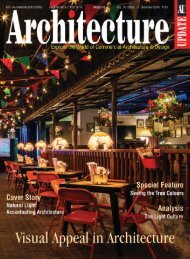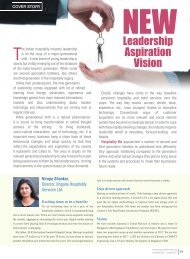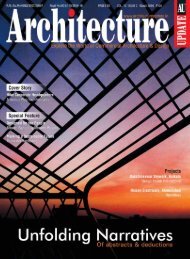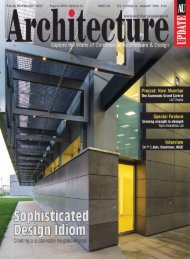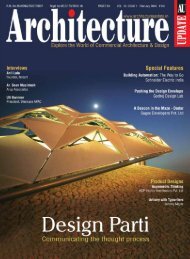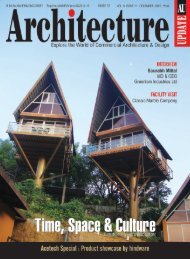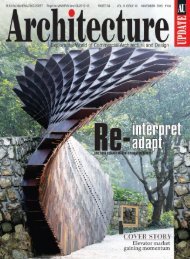Transit Architecture Time for a Drastic Change
Transit Architecture Time for a Drastic Change
Transit Architecture Time for a Drastic Change
You also want an ePaper? Increase the reach of your titles
YUMPU automatically turns print PDFs into web optimized ePapers that Google loves.
could be utilised <strong>for</strong> gardening purpose and storm water could<br />
be treated <strong>for</strong> drinking purpose or recharging of the water table.<br />
Further, one of the 5 HP submersible pumps could be replaced<br />
by bull driven borehole line shaft pump. This pump is a positive<br />
displacement screw pump that is driven by two bulls connected to<br />
the pump rotor through a gear and chain and pulley arrangement.<br />
Furthermore, bull driven oil expeller and flour mill demonstrate<br />
the utility of bulls and this helps to make oil and flour in an ecofriendly<br />
fashion.<br />
Also, use of bio-digesters enables the use of Biomass as a<br />
renewable energy resource derived from the carbonaceous waste<br />
of various human and natural activities. Biomass does not<br />
add carbon- dioxide to the atmosphere. Moreover, symbiotic<br />
recycling model calls <strong>for</strong> utilisation of the waste generated within<br />
a stipulated time frame, <strong>for</strong> instance during day time hens could<br />
be fed with muggets and the left over of the same could be eaten<br />
by frogs during the night and fish leftovers could be consumed by<br />
ducks. Ultimately the waste generated if used at right time <strong>for</strong> right<br />
resource development they may end up with the production of<br />
eggs in the morning. On similar vision, sanitising dumping ground<br />
waste with natural and herbal enzymes will help the natural waste<br />
decompose with flies’ action and the scrap and plastic shall get<br />
segregated on its own to be sent to the recycling yard.<br />
Besides these, the evolution criteria’s include smart sourcing that<br />
is to reduce the overall carbon footprint, 90% of the materials<br />
can be sourced from within 50 km radius of the facility. Then,<br />
zoned construction enables that the construction activity is not<br />
allowed to spread all throughout the village. It should be restricted<br />
to only some areas with all the sun-dried brick production units<br />
strategically placed near those areas to minimise transportation<br />
activity. Further, Garli Village shall focus on the behaviour<br />
and impact of the occupants, with less reliance on technology<br />
<strong>for</strong> generating energy. Everything from choices made during<br />
construction to the way occupants eat and sources of food is<br />
governed by local resources. On a concluding note, the need<br />
of the hour states that waste water management system and<br />
symbiotic-recycling model, linked with biogas generation on site,<br />
water conservation, and organic farming etc. should be basic<br />
parameters <strong>for</strong> design consideration of rural India. <br />
Fact file:<br />
Name of Competition : India’s Next Competition, Smart Ideas <strong>for</strong> a<br />
Smart Society<br />
Conducted by : Ultra Tech, Aditya Birla Group<br />
Date of Conclusion : April 2017<br />
ParticipatingTeam : Pappal Suneja & Associates<br />
Participants : Pappal Suneja, Principal Architect;<br />
Beena Kumari, Structural Engineer;<br />
Mayank Gupta, Graphic Designer<br />
Status : First Runner Up ( North Zone)<br />
<strong>Architecture</strong> Update February 2018 55


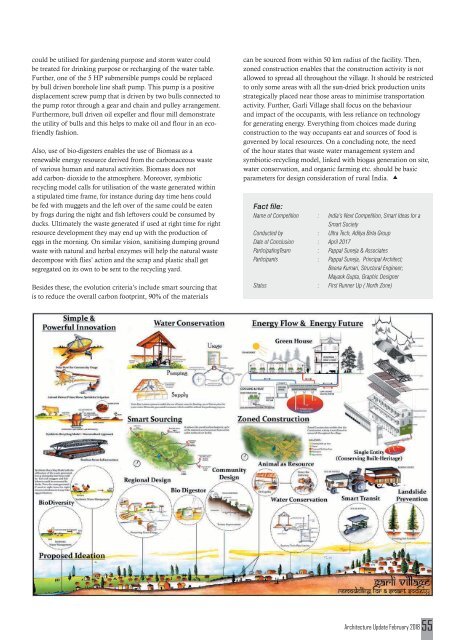
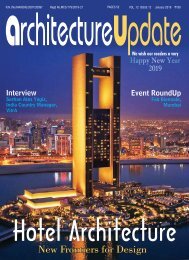
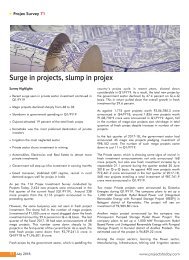

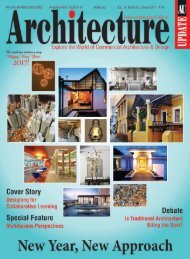
![40-41] Book Review_Sourabh Gupta](https://img.yumpu.com/56720840/1/190x253/40-41-book-review-sourabh-gupta.jpg?quality=85)
